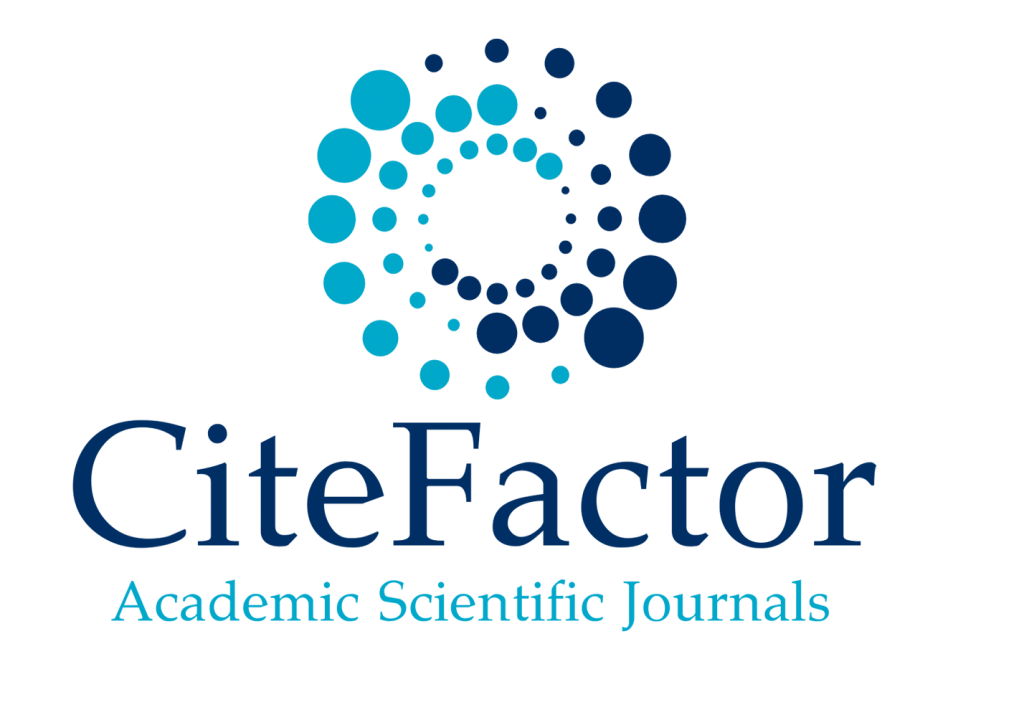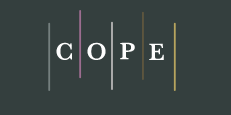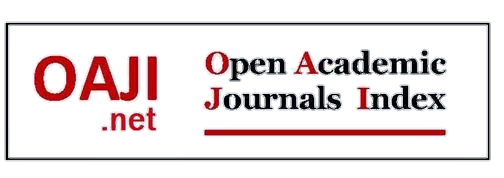The Impact of External Environment, Organizational Structure, People and Technology on Performance of FMCG Companies in Nigeria
1Fajembimo, 2Akinniyi Isaac
1,2Department of Business Administration and Marketing Babcock University. Ilisan-Remo. Ogun state. Nigeria.
https://doi.org/10.47191/jefms/v8-i4-40ABSTRACT:
This study investigates how the external environment, organizational structure, people, and technology impact the performance of Fast-Moving Consumer Goods (FMCG) companies in Nigeria. A quantitative approach surveyed 291 top-level managers from a population of 1207, employing a structured questionnaire and statistical analysis via SPSS, focusing on linear regression to evaluate the relationships between variables. The results indicate that all four factors significantly and positively influence organizational performance. Specifically, a decentralized and adaptive organizational structure and a dynamic external environment were strong predictors of improved performance, aligning with contingency theory principles. The findings also emphasize the importance of human resources; effective HR management practices, especially within a supportive and flexible organizational context, markedly enhance performance. Technology, while positively affecting performance, shows optimal impact when aligned with organizational structures that effectively integrate technological innovations. In conclusion, the study emphasizes the critical role of aligning external environment, organizational structure, people, and technology to boost organizational performance. Implications highlight the need for FMCG firms to adopt decentralized, adaptive structures and integrate strategic HR practices. Technological investments should align with organizational changes to maximize benefits. Recommendations include fostering adaptive structures, strategically integrating HR practices, aligning technology with organizational frameworks, and continuously adjusting organizational strategies to external environmental dynamics for sustained competitive advantage.
KEYWORDS:
External Environment, Organizational Structure, Human Resources, Technology, Organizational Performance, FMCG, Nigeria.
REFERENCES:
1) Abu, N. I. (2024). Effect of Inflation on Stock Market Performance of Fast-Moving Consumer Goods Sector in Nigeria. Nigerian Journal of Management Studies, 26(1), 19-37.
2) Adebisi, J. F., & Gbegi, D. O. (2013). Effect of multiple taxation on the performance of small and medium scale business enterprises (A study of West African Ceramics Ajeokuta, Kogi State). Mediterranean Journal of Social Sciences, 4(6), 323-334. https://doi.org/10.5901/mjss.2013.v4n6p323
3) Akhtar, N., Awan, S. H., Rind, R. A., & Naveed, S. (2021). Impact of human resource management practices on organizational performance: Mediating role of employee engagement and moderating role of organizational structure. Cogent Business & Management, 8(1), 1871965. https://doi.org/10.1080/23311975.2021.1871965
4) Akhtar, N., Awan, S. H., Rind, R. A., & Naveed, S. (2021). Impact of human resource management practices on organizational performance: Mediating role of employee engagement and moderating role of organizational structure. Cogent Business & Management, 8(1), 1871965. https://doi.org/10.1080/23311975.2021.1871965
5) Auh, S., & Menguc, B. (2007). Performance implications of the direct and moderating effects of centralization and formalization on customer orientation. Industrial Marketing Management, 36(8), 1022-1034. https://doi.org/10.1016/j.indmarman.2006.02.010
6) Azeez, M.S., & Abeyratna, W.A. (2020). The impact of personal selling on buying behavior with special reference to clothing stores in Sri Lanka. Journal of Marketing Management 4, 36-54.
7) Bakker, A. B., & Demerouti, E. (2008). Towards a model of work engagement. Career Development International, 13(3), 209-223. https://doi.org/10.1108/13620430810870476
8) Barney, J. (1991). Firm resources and sustained competitive advantage. Journal of Management, 17(1), 99-120. https://doi.org/10.1177/014920639101700108
9) Becker, B. E., & Huselid, M. A. (1998). High performance work systems and firm performance: A synthesis of research and managerial implications. Research in Personnel and Human Resources Management, 16, 53-101.
10) Becker, B. E., & Huselid, M. A. (2006). Strategic human resources management: Where do we go from here? Journal of Management, 32(6), 898-925. https://doi.org/10.1177/0149206306293662
11) Becker, G. S. (1964). Human capital: A theoretical and empirical analysis, with special reference to education. University of Chicago Press.
12) Bharadwaj, A., El Sawy, O. A., Pavlou, P. A., & Venkatraman, N. (2013). Digital business strategy: Toward a next generation of insights. MIS Quarterly, 37(2), 471-482. https://doi.org/10.25300/MISQ/2013/37:2.3
13) Boxall, P., & Purcell, J. (2011). Strategy and human resource management (3rd ed.). Palgrave Macmillan.
14) Boyne, G. A., & Meier, K. J. (2009). Environmental turbulence, organizational stability, and public service performance. Administration & Society, 40(8), 799-824. https://doi.org/10.1177/0095399708326333
15) Bughin, J., Hazan, E., Lund, S., Dahlstrom, P., Wiesinger, A., & Subramaniam, A. (2018). Artificial intelligence: The next digital frontier? McKinsey Global Institute. Retrieved from https://www.mckinsey.com/featured-insights/artificial-intelligence/ai-index
16) Burns, T., & Stalker, G. M. (1961). The management of innovation. Tavistock.
17) Chesbrough, H., & Teece, D. J. (2018). Organizing for innovation in the digitized world. California Management Review, 61(1), 35-54.
18) Creswell, J. W., & Creswell, J. D. (2017). Research design: Qualitative, quantitative, and mixed methods approach (5th ed.). SAGE Publications.
19) Crook, T. R., Todd, S. Y., Combs, J. G., Woehr, D. J., & Ketchen, D. J. (2011). Does human capital matter? A meta-analysis of the relationship between human capital and firm performance. Journal of Applied Psychology, 96(3), 443-456. https://doi.org/10.1037/a0022147
20) Daft, R. L. (2016). Organization theory and design (12th ed.). Cengage Learning.
21) Daft, R. L., & Lengel, R. H. (1986). Organizational information requirements, media richness and structural design. Management Science, 32(5), 554-571. https://doi.org/10.1287/mnsc.32.5.554
22) Daft, R. L., & Lengel, R. H. (1986). Organizational information requirements, media richness and structural design. Management Science, 32(5), 554-571. https://doi.org/10.1287/mnsc.32.5.554
23) Delery, J. E., & Doty, D. H. (1996). Modes of theorizing in strategic human resource management: Tests of universalistic, contingency, and configurational performance predictions. Academy of Management Journal, 39(4), 802-835. https://doi.org/10.2307/256713
24) Dogara, D. (2015). Assessing the impact of the Nigerian business environment on company performance: A case of 20 most capitalized companies in Nigeria [Unpublished doctoral dissertation]. Ahmadu Bello University, Zaria, Nigeria.
25) Donaldson, L. (2001). The contingency theory of organizations. Sage.
26) Ekanem, U.A. (2021). A critical analysis of promotional mix element and organizational performance in champion brewery plc, Uyo. European Journal of Business and Innovation Research 9(40), 11-23. https://doi.org/10.37745/ejbir.2013
27) Elbanna, S., Hsieh, L., & Child, J. (2020). The influence of external environment on organizational strategy, structure and performance: A meta-analysis. Management Decision, 58(3), 513-535. https://doi.org/10.1108/MD-04-2019-0511
28) Elbanna, S., Hsieh, L., & Child, J. (2020). The influence of external environment on organizational strategy, structure and performance: A meta-analysis. Management Decision, 58(3), 513-535. https://doi.org/10.1108/MD-12-2018-1386
29) Field, A. (2018). Discovering statistics using IBM SPSS statistics (5th ed.). SAGE Publications.
30) Ghemawat, P. (2017). Globalization in the age of Trump: Geopolitics, economics, and trade. Harvard Business Review. Retrieved from https://hbr.org/2017/03/globalization-in-the-age-of-trump
31) Harter, J. K., Schmidt, F. L., & Hayes, T. L. (2002). Business-unit-level relationship between employee satisfaction, employee engagement, and business outcomes: A meta-analysis. Journal of Applied Psychology, 87(2), 268-279. https://doi.org/10.1037/0021-9010.87.2.268
32) Hidayat, H., Astutui, R.S., & Puspitujati, E. (2023). Development of the marketing strategy to boost wedang sirih rempah product market share. International Journal of Current Science Research and Review 6(8), 5800-5811. DOI: 10.47191/ijcsrr/V6-i8-47
33) Hitt, M. A., Bierman, L., Shimizu, K., & Kochhar, R. (2001). Direct and moderating effects of human capital on strategy and performance in professional service firms: A resource-based perspective. Academy of Management Journal, 44(1), 13-28 https://doi.org/10.2307/3069335
34) Jansen, J. J., Tempelaar, M. P., Van den Bosch, F. A., & Volberda, H. W. (2009). Structural differentiation and ambidexterity: The mediating role of integration mechanisms. Organization Science, 20(4), 797-811. https://doi.org/10.1287/orsc.1080.0415
35) Jansen, J. J., Tempelaar, M. P., Van den Bosch, F. A., & Volberda, H. W. (2009). Structural differentiation and ambidexterity: The mediating role of integration mechanisms. Organization Science, 20(4), 797-811. https://doi.org/10.1287/orsc.1080.0415
36) Jiang, K., Lepak, D. P., Hu, J., & Baer, J. C. (2012). How does human resource management influence organizational outcomes? A meta-analytic investigation of mediating mechanisms. Academy of Management Journal, 55(6), 1264-1294. https://doi.org/10.5465/amj.2009.0318
37) Kahn, W. A. (1990). Psychological conditions of personal engagement and disengagement at work. Academy of Management Journal, 33(4), 692-724. https://doi.org/10.5465/256287
38) Kakanda, M. M., Bello, A. B., & Abba, M. (2016). Effect of capital structure on performance of listed consumer goods companies in Nigeria. Research Journal of Finance and Accounting, 7(8), 211-219.
39) Kane, G. C., Palmer, D., Phillips, A. N., & Kiron, D. (2016). Aligning the organization for its digital future. MIT Sloan Management Review.
40) Lawrence, P. R., & Lorsch, J. W. (1967). Differentiation and integration in complex organizations. Administrative Science Quarterly, 12(1), 1-47. https://doi.org/10.2307/2391211
41) Leonardi, P. M. (2015). Ambient awareness and knowledge acquisition: Using social media to learn “who knows what” and “who knows whom”. MIS Quarterly, 39(4), 747-762. https://doi.org/10.25300/MISQ/2015/39.4.4
42) Macey, W. H., & Schneider, B. (2008). The meaning of employee engagement. Industrial and Organizational Psychology, 1(1), 3-30. https://doi.org/10.1111/j.1754-9434.2007.0002.x
43) Maharaj, R. (2022). The Relevance Of A Purpose-Driven Strategy In Enabling Fmcg Companies To Sustain Long-Term Customer Loyalty And Optimal Financial Performance: A South African Perspective (Master's thesis, University of Pretoria (South Africa)).
44) Mintzberg, H. (1979). The structuring of organizations: A synthesis of the research. Prentice-Hall.
45) Nambisan, S. (2017). Digital entrepreneurship: Toward a digital technology perspective of entrepreneurship. Entrepreneurship Theory and Practice, 41(6), 1029-1055. https://doi.org/10.1111/etap.12254
46) Nambisan, S., Lyytinen, K., Majchrzak, A., & Song, M. (2017). Digital innovation management: Reinventing innovation management research in a digital world. MIS Quarterly, 41(1), 223-238. https://doi.org/10.25300/MISQ/2017/41.1.03
47) Neirotti, P., & Paolucci, E. (2019). Industry and firm effects on organizational design choices: The case of information technology. European Management Review, 16(2), 395-413. https://doi.org/10.1111/emre.12325
48) Niarametircs (2023). https://nairametrics.com/2023/06/21/nigerian-fmcgs-profits-surge-as-production-costs-are-passed-on-to-customers/#google_vignette
49) Njanja, W. L., Ogutu, M., & Pellisier, R. (2012). The influence of the external environment on the internal management strategies within micro, small and medium enterprises: A Kenyan case. International Journal of Business and Commerce, 2(3), 41-56. https://ijbcnet.com/2-3/IJBC-12-2304.pdf
50) Odupitan, A. (2017). Understanding the distribution channels of fast-moving consumable goods (FMCG) of food industry in Nigeria.
51) Olatunji, O. A., & Awolusi, O. D. (2020). Performance evaluation and improvement among salesmen in the Nigerian fast moving consumer goods sector. Journal of Social and Development Sciences, 10(4(S), 12-29. https://doi.org/10.22610/jsds.v10i4(S).2898
52) Olson, E. M., Slater, S. F., & Hult, G. T. M. (2005). The performance implications of fit among business strategy, marketing organization structure, and strategic behavior. Journal of Marketing, 69(3), 49-65. https://doi.org/10.1509/jmkg.69.3.49.66362
53) Pertusa-Ortega, E. M., Zaragoza-Sáez, P., & Claver-Cortés, E. (2010). Can formalization, complexity, and centralization influence knowledge performance? Journal of Business Research, 63(3), 310-320. https://doi.org/10.1016/j.jbusres.2009.03.015
54) Pertusa-Ortega, E. M., Zaragoza-Sáez, P., & Claver-Cortés, E. (2010). Can formalization, complexity, and centralization influence knowledge performance? Journal of Business Research, 63(3), 310-320. https://doi.org/10.1016/j.jbusres.2009.03.015
55) Pfeffer, J. (2005). Producing sustainable competitive advantage through the effective management of people. Academy of Management Perspectives, 19(4), 95-106. https://doi.org/10.5465/amp.2005.19417910
56) Ployhart, R. E., & Moliterno, T. P. (2011). Emergence of the human capital resource: A multilevel model. Academy of Management Review, 36(1), 127-150. https://doi.org/10.5465/amr.2011.55662487
57) PwC. (2021). Global regulatory challenges. PricewaterhouseCoopers. Retrieved from https://www.pwc.com/gx/en/services/governance-insights-center/regulatory.html
58) Ransbotham, S., Kiron, D., & Prentice, P. K. (2016). Minding the analytics gap. MIT Sloan Management Review, 57(3), 63-68.
59) Ruekert, R. W., Walker Jr, O. C., & Roering, K. J. (1985). The organization of marketing activities: A contingency theory of structure and performance. Journal of Marketing, 49(1), 13-25. https://doi.org/10.1177/002224298504900102
60) Saks, A. M. (2006). Antecedents and consequences of employee engagement. Journal of Managerial Psychology, 21(7), 600-619. https://doi.org/10.1108/02683940610690169
61) Schaufeli, W. B., & Salanova, M. (2007). Work engagement: An emerging psychological concept and its implications for organizations. In S. W. Gilliland, D. D. Steiner, & D. P. Skarlicki (Eds.), Research in social issues in management (Vol. 5, pp 135-177). Information Age.
62) Schuler, R. S., & Jackson, S. E. (1987). Linking competitive strategies with human resource management practices. Academy of Management Perspectives, 1(3), 207-219. https://doi.org/10.5465/ame.1987.4275740
63) Shabankareh, N., & Rastgari, B. (2012). The relationship between organizational structure and organizational trust. Interdisciplinary Journal of Contemporary Research in Business, 4(6), 606-615.
64) Shodiq, S. F., & Ghozali, I. (2012). Evaluasi kesesuaian struktur organisasi pengelola teknologi informasi dengan rencana jangka panjang instansi (Studi kasus pada Dinas XYZ). Jurnal Sistem Informasi Bisnis, 2(1), 1-8. https://doi.org/10.21456/vol2iss1pp1-8
65) Soehardi. (2022). Effect of advertising, direct marketing, word of mouth and personal selling on consumer purchasing decisions. Jurnal Manajemen 41(1), 82-98. http://dx.doi.org/10.24912/jm.v26i1.835
66) Thompson, J. D. (1967). Organizations in action: Social science bases of administrative theory. McGraw-Hill.
67) Verbeke, A., & Asmussen, C. G. (2016). Global, local, or regional? The locus of MNE strategies. Journal of International Business Studies, 47(5), 513-538.
68) Vial, G. (2019). Understanding digital transformation: A review and a research agenda. Journal of Strategic Information Systems, 28(2), 118-144. https://doi.org/10.1016/j.jsis.2019.01.003
69) Wamba, S. F., Gunasekaran, A., Akter, S., Ren, S. J., Dubey, R., & Childe, S. J. (2017). Big data analytics and firm performance: Effects of dynamic capabilities. Journal of Business Research, 70, 356-365. https://doi.org/10.1016/j.jbusres.2016.08.009
70) Wilden, R., Gudergan, S. P., Nielsen, B. B., & Lings, I. (2013). Dynamic capabilities and performance: Strategy, structure and environment. Long Range Planning, 46(1-2), 72-96. https://doi.org/10.1016/j.lrp.2012.12.001
71) Wright, P. M., McMahan, G. C., & McWilliams, A. (1994). Human resources and sustained competitive advantage: A resource-based perspective. International Journal of Human Resource Management, 5(2), 301-326. https://doi.org/10.1080/09585199400000020
72) Yadava, A. K., Khan, I. A., Pandey, P., Aarif, M., Khanna, G., & Garg, S. (2022). Impact of marketing communication and information sharing on the productivity of India’s smalland medium-sized businesses (SMEs). International Journal of Health Sciences, 6(2), 12745–12755. https://doi.org/10.53730/ijhs.v6nS2.8352
73) Yoo, Y., Boland, R. J., Jr., Lyytinen, K., & Majchrzak, A. (2012). Organizing for innovation in the digitized world. Organization Science, 23(5), 1398-1408. https://doi.org/10.1287/orsc.1120.0771
74) Yunnita, S., & Angga, W.G. (2020). Marketing strategy in effort to increase competitive advantage in small and medium enterprises. Jurnal Ilmiah Manajemen Fakultas Ekonomi,6(2), https://doi.org/10.34203/jimfe.v6i2.2390
















